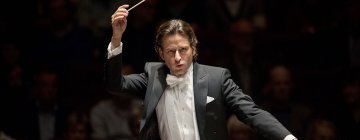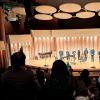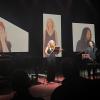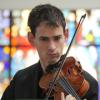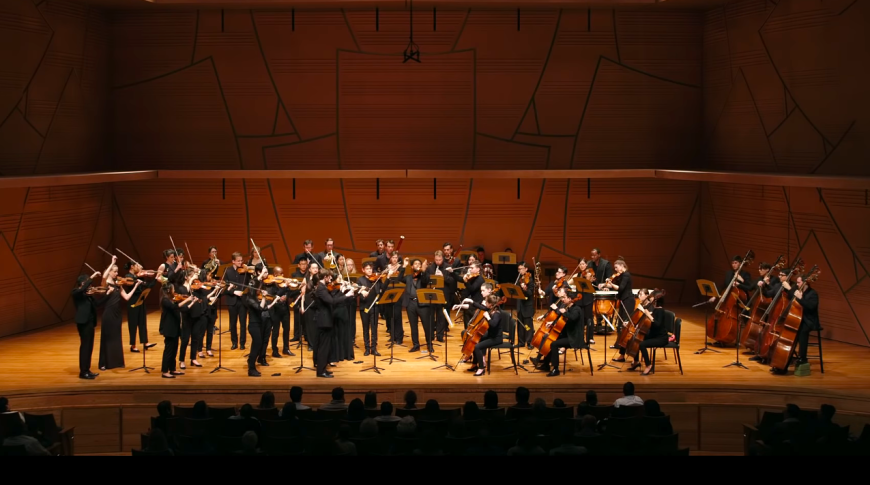
Kaleidoscope Chamber Orchestra will add a homegrown festival to the Los Angeles music scene this summer with its inaugural Santa Monica Music Festival. The orchestra, founded in 2014 by Benjamin Mitchell, will present four programs July 17–20 at the First Presbyterian Church of Santa Monica. Expect no batons, since Kaleidoscope performs without a conductor.
The ensemble has commissioned four world premieres from composers Will Healy, Libby Larsen, Pamela Z, and Emma O’Halloran. The orchestra will also present one U.S. premiere by Liza Lim. A classical heavyweight — Brahms, Mozart, Béla Bartók, and Franz Schubert — anchors each concert.
“We don’t do theme programs, but it’s all music we’re excited to share,” said Mitchell, who lives in Ireland but will be in town to perform on clarinet at the festival.
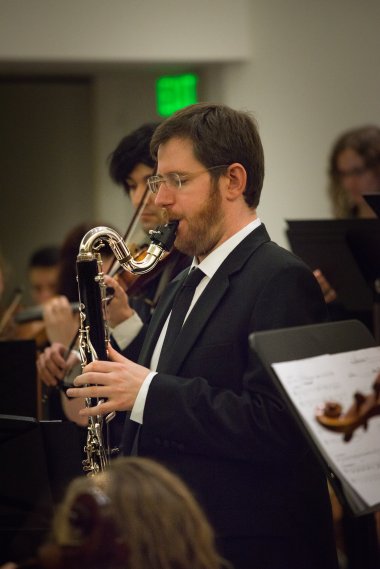
Although Kaleidoscope is a small organization that is mostly funded by donors and grants, the orchestra works with well-established composers. “With Libby and Pamela, they’re more established composers, and I was already familiar with them before I started,” said Mitchell. “We’re grateful that they’re into writing new works for us, and I think they’re going to be special. Pamela’s piece has an electronic part that Pam herself had recorded, she’s kind of the soloist.”
The orchestra’s Call for Scores program has been quite a success, according to Mitchell. He reports that Kaleidoscope receives thousands of submissions from composers, 8,000 in 2020 alone. “Most composers are aware of the work we’re doing and want to work with us,” he says. “We’re in a fortunate position to have a huge selection of music to choose from every season. Even if some composers we program might be less familiar, they’re carefully curated from a large pool of talented composers all over the world.”
While new music might be an acquired taste, Mitchell likens the orchestra’s concerts to going to a museum. “You aren’t going to like every piece of art, but if you don’t see new things, you won’t find something meaningful to connect with. It takes time for some newer works to connect with people,” Mitchell said. “Older works used to be new. If people in past generations didn’t commission pieces by Bartók and Brahms, we wouldn’t have these great works from the past.”
Outside its Santa Monica Music Festival, Kaleidoscope shares music with diverse audiences, concertizing in schools, hospitals and homeless shelters. To that end, the orchestra is flexible in size. “A concert with us could be anything from a chamber group to large orchestra, to anything in between,” Mitchell pointed out.
But Mitchell stressed that the orchestra is inflexible on one point — performing without a conductor. “When there’s not just one person in charge of setting the tempo, all the musicians can collaborate like [in] a string quartet,” he said. “I think musicians love chamber music because of the way we collaborate. We try to hold to that model, even with larger works like a Mahler symphony.”
Mitchell said there’s one more benefit to being conductorless. “When you’re performing without a conductor, you have to know all the parts. Every piece has different challenges, but staying together isn’t one of them. It’s how we want to interpret the piece, and [what] helps the music sound as good as possible.”
